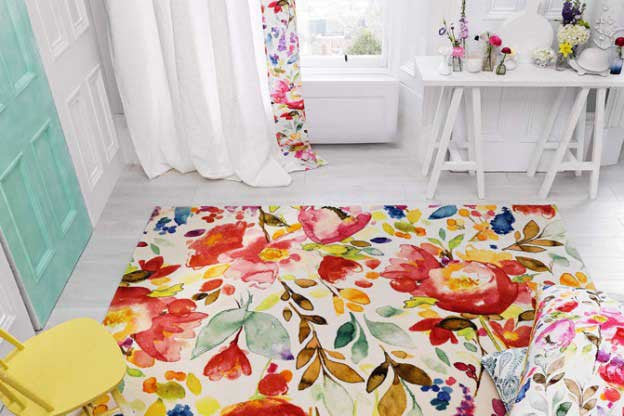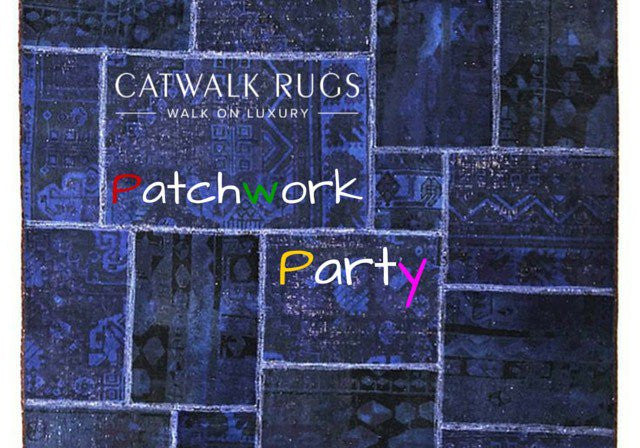Why are Persian rugs expensive? What's the deal?
Much like the difference between a cheaper wine and an expensive wine, the price is within the finer details and in this case, the history, the character and quality of the rug. No two Persian Rug are alike and they all have their own distinct personality. They have a certain quality that normally ranks them above machine made rugs.
Apart from all of this, the way they are made takes months, if not years to have a completed product.
The trade off in a lengthy production time when compared to a shorter more automated one?
To answer that question, ask yourself when is the last time you have seen a Persian Rug being thrown out or even the last time you saw a damaged Persian Rug? Their resale value is a testament to their hand knotted durability and reputation world-wide.
The humble origins of a Persian Rug
The beginnings of a baby rug, or 'bug' for short (this is not a proper term, do not use it) are usually inspired by the artists surroundings or a pre made design plate. Normally, the weaver will tie the material which can be either wool or silk around 'warps' of the foundation of the rug.
These ties are knots, and there are several possible variations to them which we will discuss shortly.
The patterns are made by painstakingly creating rows of knots within the foundations of the rug, and it can take great skill to stick with the original intended design.
The warp
 A rug is also comprised of vertical strands, which is what the warp refers to. They provide the structural stability for the rug, alongside the wefts which are placed between the warps.
A rug is also comprised of vertical strands, which is what the warp refers to. They provide the structural stability for the rug, alongside the wefts which are placed between the warps.
It may seem a little confusing at first, especially with such uncommon terminology so here's an image to illustrate the concept.
Which materials do Persian rugs use?
As previously mentioned, wool and silk are quite common but cotton can also be used.
Cotton is usually used for both the warp and the weft in most Persian Rugs, but has the added bonus of being able to produce some great strong white effects in rugs if that's the design they're going for.

Last but not least, Silk is sometimes used in order to attain more delicate and intricate patterns.
Something of special note is that tribal rug makers sometimes even use Camel or Goats wool!

Persian Rug colouring methods
There's two schools of thought, and a bit of debate on the matter of colouring Persian rugs. Persian rugs have their roots strongly grasped in tradition.
The first traditional Persian Rugs were made using natural dyes, which often give off a more neutral and muted tone. Although chemical dyes have been around for over 100 years, some feel that a true Persian Rug will use natural dyes over chemical dyes.
The benefit of chemical dyes is that they will of course have a stronger, more defined impact on the overall look on the rug. We feel that both methods are perfectly okay, depending on the look and character of the rug you wish to purchase.
Persian Rug shaving and washing
Upon finishing your Persian Rugs design, knotting, colouring, warp and wefting, you can take a deep breath, and have a nice cup of coffee get right back to work because you're not quite done yet! The rug surface is still quite uneven and you can in fact hardly see the pattern at this stage.
In order to finish a Persian Rug, you'll need to perform some shaving and washing. Several times in fact.
A Persian Rug needs to be carefully clipped and shaved to the correct height. You should be starting to get an idea of just how personal and unique every single Persian Rug is! A great deal of care and love is put into each and every one.
Washing the rug helps to prevent colour run later in the rugs life. It also helps to remove any unwanted dye or accidental bits and pieces floating around.
Finishing a Persian Rug
Shrinking can be a problem with new rugs, especially after being washed, so the Persian Rug is placed on a blocking device.
From there, the rug is shipped to one of many numerous locations around the world to live a long happy life with its new owner!




Leave a comment
All comments are moderated before being published.
This site is protected by reCAPTCHA and the Google Privacy Policy and Terms of Service apply.